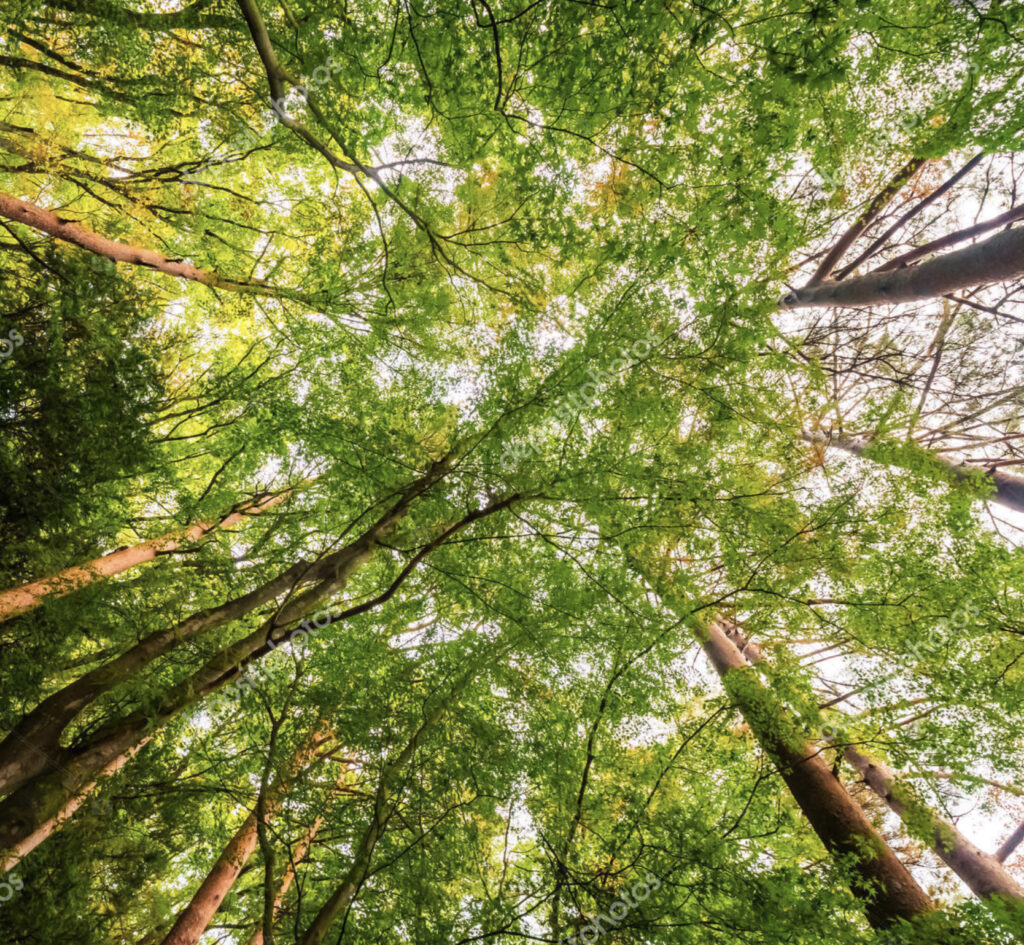by Ted Nickerson
Trees and aviation do not normally need each other, but trees could soon be a contributor to developing a low-carbon / carbon-neutral Pickering Airport.

In 2017, Canada’s aviation emissions accounted for 21 megatonnes (1 megatonne = 1 million metric tonnes) or 3% of total emissions, with domestic air travel accounting for 1%, and international travel for another 2%. To achieve carbon-neutral growth after 2020, the airline industry has signed onto the ICAO Carbon Offsetting and Reduction Scheme for International Aviation – better known as “CORSIA”. CORSIA addresses emissions from aircraft. Airports need to contribute to emissions reductions too.
Planting trees is one way to combat climate changes (CO2 capture) and has been promoted by many parties.
This is a good idea. Trees consume CO2 and sequester it for many decades. They moderate temperatures in urban settings. Then there is a cultural and social aspect – This is Canada and Canadians like trees on the streets, in parks, in their yards and of course, forests.
Simple internet searches yield useful data. The best trees to plant will be deciduous (oaks, maples, poplar), although certain types of pine trees are great at carbon capture too. A young tree can capture 13 pounds of CO2 per year, while a mature tree captures 48 pounds per year. An acre of trees could capture 2.5 tons per year.

In 2017, Canada’s emissions totalled 716 megatonnes. So, a 44 megatonne-reduction created by planting 2 billion trees equals a 6 percent reduction in emissions. That’s 25% of the emissions from all transportation, double the emissions from aviation, or 51% of the emissions from all buildings in Canada.
But is there a problem here with a national proposal? Yes, several.
Problem #1: Where do you plant this many trees? You need to plant them where trees don’t already exist, and in a temperature climate zone where deciduous trees will thrive.
At 2.5 tons of carbon capture per acre of trees, 2 billion trees require 19,200,000 acres (7,770,000 hectares / 77,700 square kilometres) of open land. For scale, that’s 122 times the area of the City of Toronto, or 12% of the total farmland in Canada.
Where in Ontario would you first look to plant millions of trees? Probably farms in southern Ontario – lots of open space, good climate and soil, easily accessible, close to major sources of emissions (cites, industries and roads).
Under a new federal government program, Ontario’s fair share of tree planting (based on its 38.3% of total Canada population – Census 2016) would be equivalent to the loss of 61% of its total farmland acreage or 81% of its total cropland.
That would mean the end of farming in Ontario! This can’t happen.
But if you exclude farmland from consideration, where else do you find 19 million viable acres nationally? The simple math challenges the credibility of a federal tree planting program.

Problem #2: Much of the land required to plant 2 billion trees will be in private hands. How do you convince the owners to participate? Will the government provide incentives, rent or buy the land? Expropriate it? Declare an emergency and expropriate it without immediate compensation? This presents a troublesome proposition.
Problem #3: 80 percent of the population of Canada lives in cities and our cities are growing. This growth is adding more people, more jobs, more housing and more roads. Urban expansion is already competing for more land from farms and local open space. The Toronto area is now adding 100,000 people a year and growth is not going to stop. How much economic growth are we prepared to trade for billions of trees?
Solution: Planting trees to fight climate change is a good idea. That a national 2 billion tree planting programs fails the test of basic math, let alone the negative impacts to farming, continued population and economic growth, even private property ownership, is not enough reason to not include trees in any climate change initiative. We should plant them wherever we can, in places and in quantities that make sense, but trees can not be Canada’s only answer to achieving carbon neutrality. The real solution is to improve efficiency and reduce emissions.
Building a new locally accessible airport in Pickering will reduce congestion at Pearson airport, improve aviation efficiency and reduce overall carbon emissions per traveler. The Pickering Airport development strategy must target low carbon / carbon neutrality. Planting trees should be part of a thoughtful and sustainable land management plan.
you will not reduce congestion- it will just be rerouted to Pickering. All the Cargo transports heading our way, picking up deliveries from the new airport, but thanks for the greenwashing. Cut trees and lose farms to put in a tarmac… jettison fuel over our Urban National Park with endangered species and watersheds…. Spin away, but don’t believe for a minute that this makes for a lower carbon footprint.
Krista Kilian your anxiety is misplaced, this is mostly a passenger airport Not cargo and Flying is usually the Most efficient way to travel between cities. It beats Emissions from driving ( Canadas other major mode of intercity travel) Hands down.
The airport lands will enable the forest and Rouge park to grow and prosper. Fuel dumping is not an issue. The designated fuel dump is over Lake Ontario but No one dumps fuel unless it’s an emergency.
You will note that the approaches into Pearson currently go over the area now and there has never been an incident.
Pickering will be Canadas first all carbon neutral airport, with Carbon Neutral Flight’s thanks to ICAOs CORSIA plan.
You are rolling coal over an airport that is critical to helping reduce congestion, improve efficiency and help Canada meet its environmental targets.
– Mark